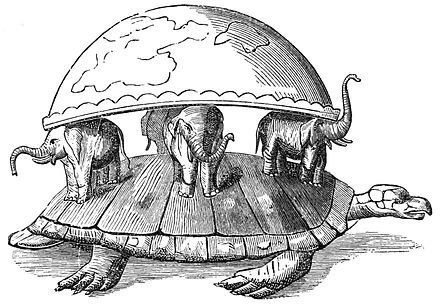Offending Copernicus

Of course this is all wild and ultimately pointless speculation, so I won’t be at all upset if you decide it is more worthwhile to go watch a game of baseball or cricket instead of reading the rest of this post. But if you’re still with me, then isn’t it a curious coincidence that you happen to be alive right at the time when humanity is rushing headlong towards the creation of AGI and superintelligence? And that you might very possibly be alive to see it happen? Doesn’t that situation offend against the Copernican principle, also known as the mediocrity principle, which urges scepticism about any explanation that places us at a privileged vantage point in time or space within the universe?
Another curious thing about the situation is the extraordinary amount of computronium that our simulators seem to have dedicated to the task of creating our context. That “context” is a universe of 100 billion galaxies each containing 100 billion stars. (Although no aliens, as far as we can tell.) And this universe has been running for 13.7 billion years.
Maybe our simulators have a great deal of computronium lying around, and maybe they don’t perceive time the way you and I do. Maybe they didn’t have to sit around twiddling their (indeterminate number of) thumbs while the earth began to cool, the autotrophs began to droll, neanderthals developed tools, we built a wall, we built the pyramids, and so on. (3)
The economical twist

An alternative possibility to all this expense is that our simulation only appears to have 10,000 billion billion star systems and a 13.7 billion-year history. If you have the capability to create beings like us then you presumably have the capability to convince us of the reality of whatever context you would like us to believe in. And you would save a fortune in time and computronium by faking the context. So if we do live in a simulation that was created for a specific purpose, surely it is more likely that we were created quite recently – maybe only a few minutes ago – kitted out with fake memories and the appearance of an enormous backstory and a vast spacial hinterland?
If that is true, it begs the question of what happens to us after the simulation completes its purpose. Perhaps it gets re-run in order to optimise the outcome. Perhaps it is just switched off and we all go to sleep, dreamless. Or perhaps we have the opportunity to combine our minds with that of the superintelligence that is created, and ascend to the level of the simulators.
Turtles all the way up

Of course the simulators themselves may be going through a similar chain of reasoning about their own existence. Perhaps we are somewhere in the midst of a deep pile of nested simulations, each created by and ultimately dependant on the one above. In a description of our world sometimes attributed to Hindu legend, the earth is a flat plate supported by elephants standing on the back of a tortoise. When asked what the tortoise is standing on, one adherent replied, “it’s turtles all the way down”. (4) Perhaps, in our case, it’s turtles all the way up.
Notes
(3) Big Bang Theory, theme tune
(4) A conversation between Bertrand Russell and an elderly lady mentioned in Stephen Hawking’s “A Brief History of Time”



